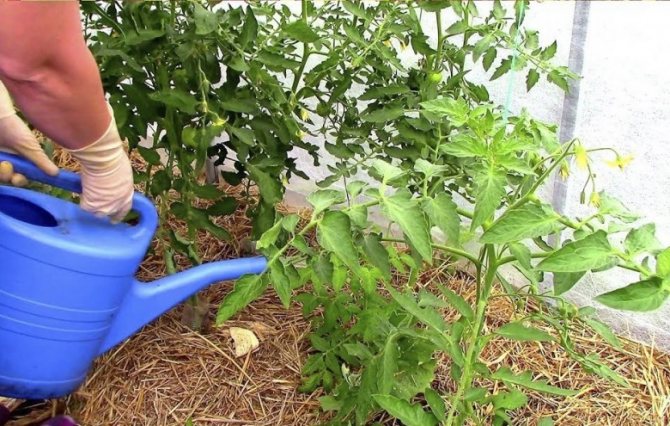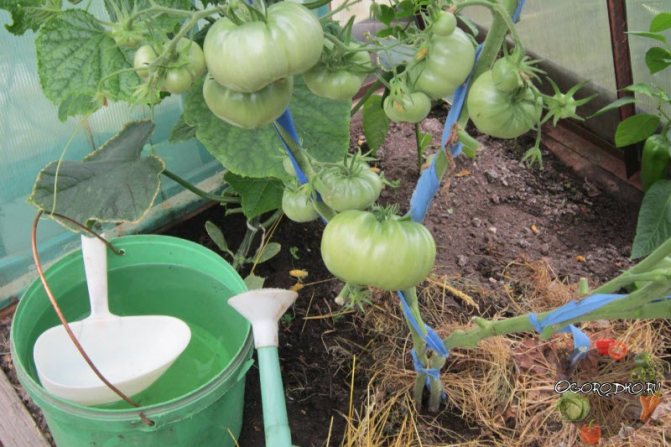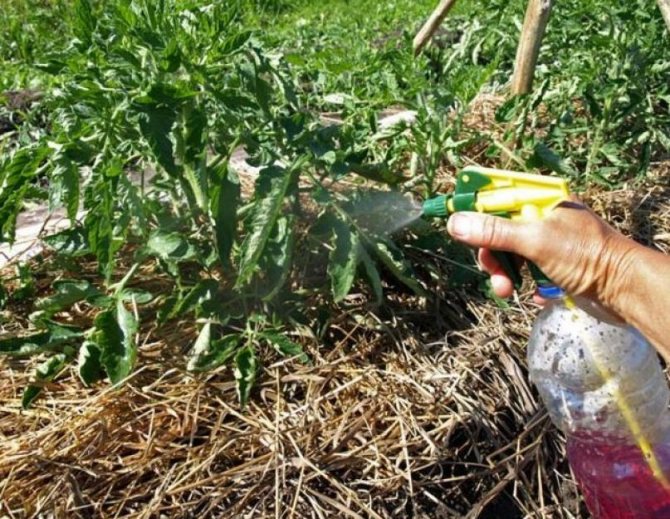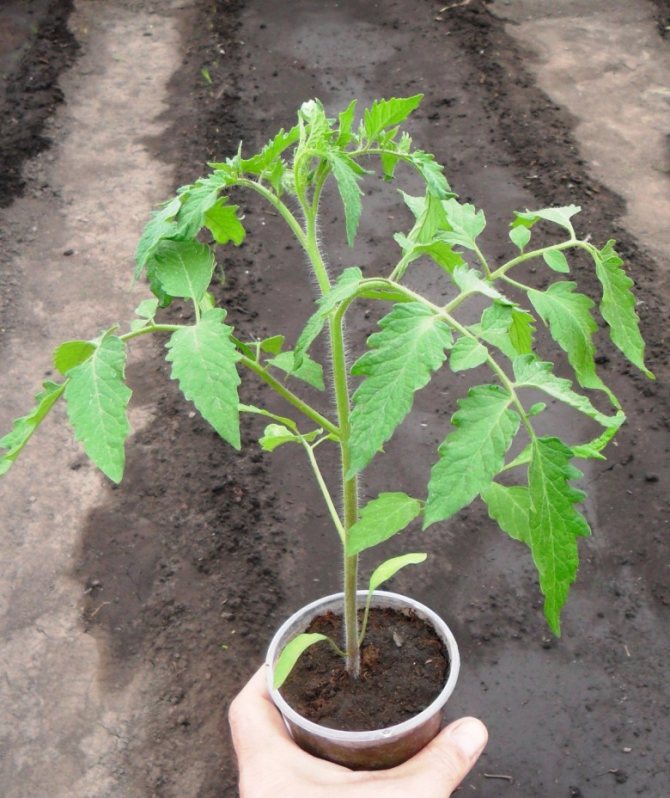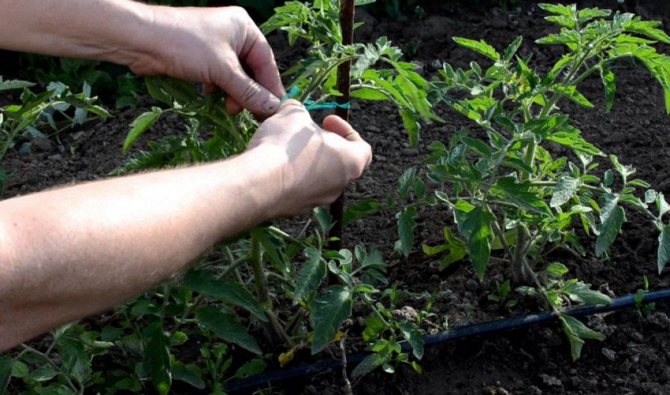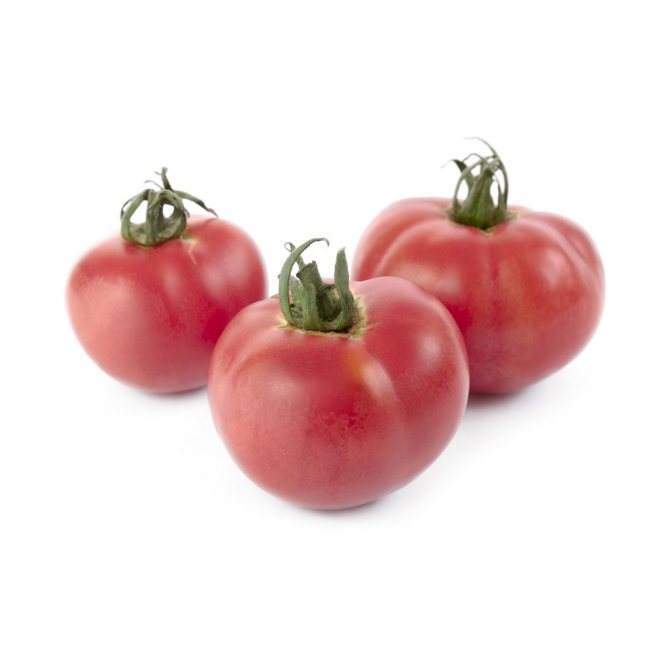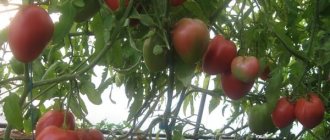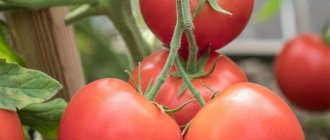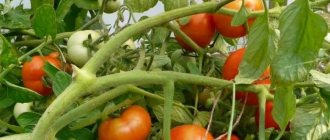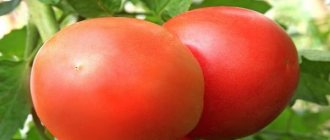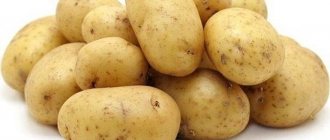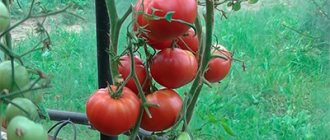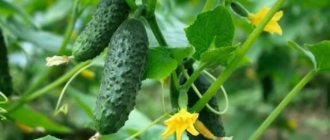Vegetable growing »Tomatoes
0
832
Article rating
Pink-fruited tomatoes are especially popular among summer residents. The assortment of varieties with pink fruits is growing every year. New hybrids, such as the Pink Miracle tomato, are replacing the classic red tomatoes from the garden beds.
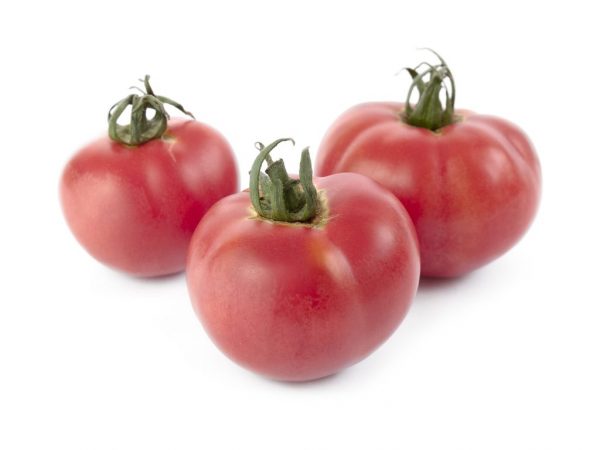
Characteristics of the variety of tomatoes Pink miracle
Tomato Pink Miracle - the birth of a fairy tale
The fact that the name justifies itself can be seen from the unique combination of the properties of this variety: the resistance of the hybrid to diseases on the one hand, pink fruit, which means great taste, on the other. Plus very early ripening times and an impressive harvest. Truly a tomato child prodigy who took the best from his parents. A real miracle!
Description of the plant
The hybrid Pink Miracle F1 was entered into the State Register in 2010. It is a determinant bush 100-110 cm high. The leaves are large, light green, with an average density. Carp inflorescences, the first is tied over the 6th leaf, then through 2 leaves. Each cluster contains 5-6 fruits.
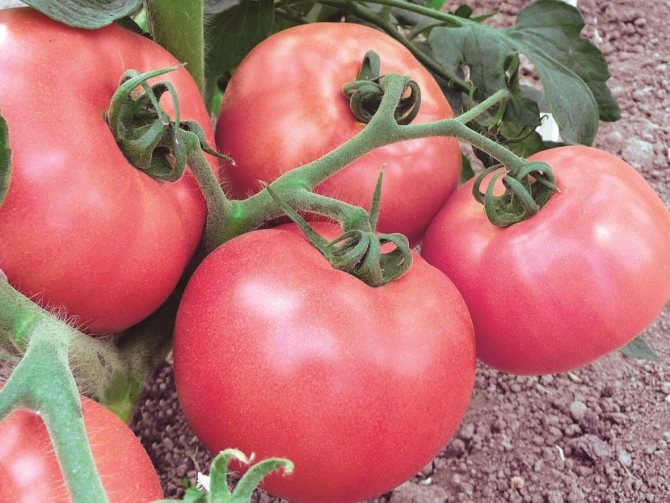

The bush needs pinching and a garter, as it quickly grows in width.
A hybrid of a very early ripening period - 80-85 days pass from the moment of full germination to commercial maturity. Recommended for growing in all regions of the Russian Federation both in the open field and in film greenhouses.


Description of fruits
Pink miracle - a tomato with smooth, rounded pink fruits. The pulp of tomatoes is of medium density, juicy, but not watery. The number of seed chambers is 4-6. The sugar content exceeds the average by 10-15%. The fruits have a characteristic tomato acidity, which favorably sets off the high sugar content.


Note! The flavor of the Rose Miracle tomato fruit was rated excellent by the Official Tasters!
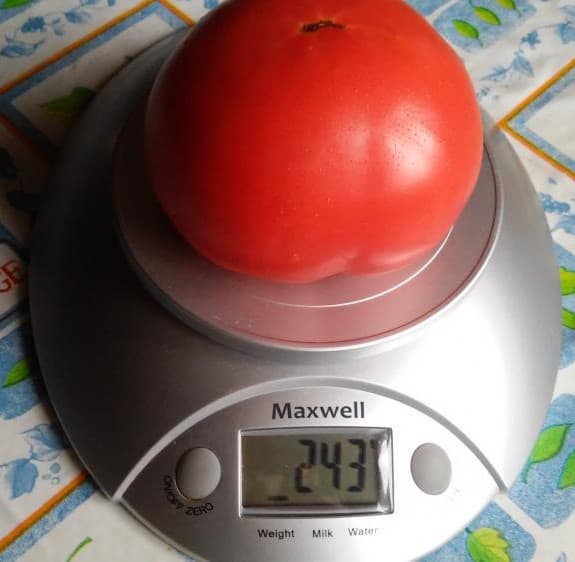

The fruit weight of the Pink Miracle tomato is from 90 to 110g. When applied in one brush - up to 200-250 g. Maturation is amicable, not extended in time.
For reference. Pink tomatoes, objectively tastier than red ones, are also healthier than their red counterparts. They contain more natural antioxidants - lycopene, selenium, carotene, as well as a mood stimulant - tyramine. At the same time, the low content of acids makes them suitable for baby and diet food, as well as for allergy sufferers.
Assignment of the variety
The State Register recommends using the Pink Miracle tomato as a salad variety. It is really good as an early vegetable, fresh, goes well with any ingredients of a wide variety of salads, hot vegetable snacks. However, due to its thin skin, it is practically unsuitable for blanks: in conservation it loses its shape and color.
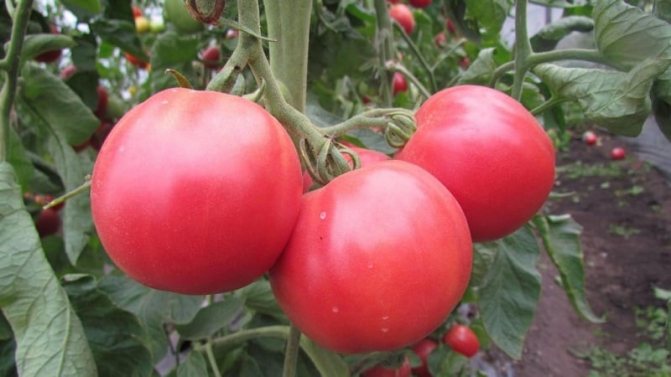

Commercial qualities and yield of the variety
A feature of the variety is its high marketability (up to 98%): fruits are practically the same size, without flaws. Keeping quality and transportability of the variety is low, due to its thin, delicate skin. Short-distance delivery is possible only for unripe fruits.
Green fruits in a state of milky ripeness are ripened indoors without noticeable loss of taste.
The average yield, according to the results of state tests, is 2-3 kg from one bush.However, according to the reviews of gardeners, subject to good care, it is quite possible to get 5-8 kg from one bush.
Features of care and cultivation
Can be grown both in a greenhouse and outdoors without much effort. Does not require special care... It will be enough to weed the bush several times and apply mineral fertilizers. There must be timely watering, after which it is necessary to loosen the ground.
The bush is quite powerful, it can reach up to 115 cm in height, spreading, so it is worth choosing such a distance between crops so that they do not interfere with each other.
The yield of the variety can be seen and compared with others in the table below:
| Variety name | Yield |
| Pink miracle | 2 kg per bush |
| American ribbed | 5.5 kg per plant |
| Sweet bunch | 2.5-3.5 kg per bush |
| Buyan | 9 kg per bush |
| Doll | 8-9 kg per square meter |
| Andromeda | 12-55 kg per square meter |
| Lady Shedi | 7.5 kg per square meter |
| Banana red | 3 kg per bush |
| Golden jubilee | 15-20 kg per square meter |
| Rose of Wind | 7 kg per square meter |
Seed preparation
Tomato Pink Miracle is a hybrid of the first generation (F1), so it does not produce viable seeds that can retain all varietal qualities. The hybrid is propagated only by selective seeds.
Such seeds have already passed pre-sowing preparation and are ready for sowing.
For your own peace of mind and guarantee of high germination of seeds, you can decontaminate them by soaking them for 30 minutes in a pink solution of potassium permanganate.
Germinating seeds
This procedure is recommended to be done without fail, it is needed to determine the suitability of the seeds. For this, seeds are laid out in one layer on a cotton cosmetic disc, gauze, a kitchen sponge, with a distance of 2-3 mm from each other. Sprayed with warm water from a spray bottle, optimally with the addition of a growth stimulant. Then wrapped in a plastic bag or put into a container with a lid to maintain constant humidity.
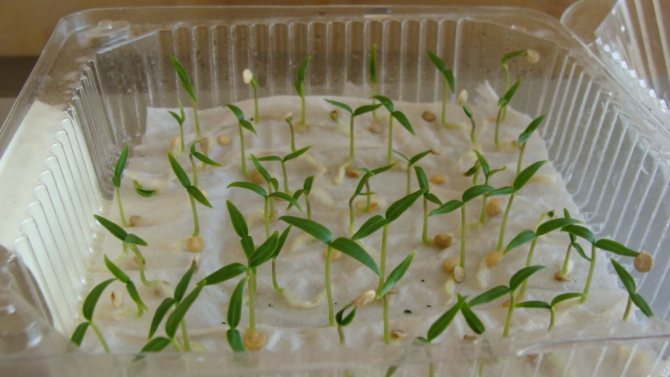

After 3-4 days, when the white roots are equal in length to the diameter of the seed, the seeds can be planted in the ground.
Sowing seeds for seedlings
The seedling soil must be water and breathable. Its optimal composition:
- 2 pieces of garden land;
- 1 part peat;
- 1 part sand;
- 0.5 cups of perlite or vermiculite.
Before planting seeds, the soil must be disinfected using one of the methods:
- shed with hot saturated pink solution of potassium permanganate;
- process with the composition: 2 drops of brilliant green per 1 liter of water;
- heat in the oven at 200 degrees for 40 minutes.
Growing tomatoes
For cultivation, they resort to the seedling method.
Hybrid seed material does not need to be disinfected and soaked in growth stimulants before sowing.
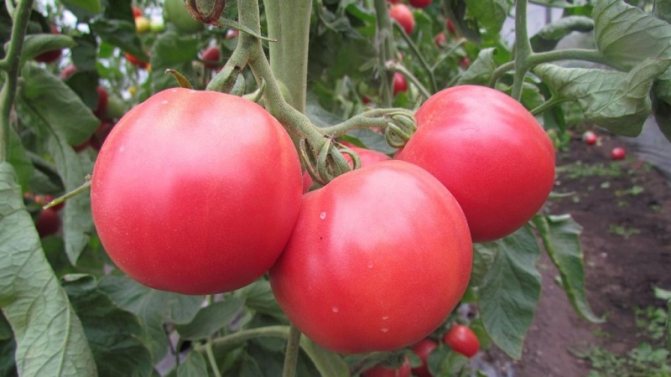

Description:
- Sow seeds for seedlings 55-60 days before transplanting to a permanent place;
- Sowing is carried out in a nutrient substrate warmed to room temperature, deepening by 1-1.5 cm;
- Comfortable temperature conditions for growing seedlings - from 23 to 25 degrees;
- Also, seedlings need a long daylight hours. With a lack of lighting, they resort to using additional light sources;
- Throughout their growth, seedlings are watered moderately;
- Well-developed sprouts do not need additional feeding. Weak shoots are fed with sodium humate, strictly following the attached instructions;
- They start picking after the formation of a pair of full-fledged leaves;
- Two weeks after the pick, the seedlings are fed with nitroammophos or nitrofos: a tablespoon of fertilizer per bucket of water. The resulting solution is used for watering plants, spending 100 ml for each pot;
- Within 1-2 weeks before transplanting to a permanent place, tomato seedlings are hardened.
The procedure will simplify the adaptation period in the new location.
Description:
- Tomato seedlings are transplanted to a permanent place in open ground after all frosts have passed.They are planted in a greenhouse structure in early May or in the last days of April;
- It is necessary to choose a site taking into account the predecessors. This will prevent possible contamination of tomatoes from previous crops. The planting of tomato seedlings is carried out on the beds after parsley, dill, zucchini, cucumbers, cauliflower and carrots;
- At the time of disembarkation, the seedlings should be about two months old;
- During planting, potassium fertilizing is carried out. The planting hole is filled with water, after which half a glass of wood ash is added;
- Bushes are planted in a vertical direction. Overgrown plants are planted with a slope, carefully sprinkling the stem with soil. Additional roots are formed on the areas of the tomato stem covered with soil;
- The recommended planting pattern is 70x40 cm.
Sowing seeds begins 2 months before planting seedlings in the ground. The soil mixture is prepared from garden soil mixed with peat and river sand. All components are thoroughly mixed. To destroy pathogenic microflora, the soil is disinfected with a hot solution of potassium permanganate.
You can plant seeds in a common wooden box or in individual containers: plastic and peat pots. Before sowing, the soil is slightly moistened with a spray bottle. Seeds are laid to a depth of 1.5 cm with a distance of 2 cm from each other. After sowing, the containers are covered with glass or foil and left in a warm and bright room at an air temperature of at least 23 ° C.
When the first shoots appear, the seedlings are rearranged in a more illuminated place, for example, on a windowsill. Daylight hours should be at least 14 hours long. If there is not enough natural light, then they are illuminated with ordinary lamps.
When 2 true leaves appear, the seedlings dive, seating them in separate containers. If the seeds are sown in individual plastic cups, the sprouts are transplanted into larger containers.
Water as the top layer of the soil dries up. Water it moderately with warm, settled water. After watering, loosening is carried out with a wooden stick - superficially, so as not to disturb the root system.
After 2 weeks, the first feeding with nitrofos is made. If the sprouts develop poorly, they are additionally fed with sodium humate.
2 weeks before planting seedlings in the ground, the seedlings begin to harden. They are taken outside for several hours, and the night temperature, where the seedlings stay until the morning, is reduced to 13 ° C.
After 2 months, the seedlings are ready to be transplanted to a permanent place. Land for planting is prepared in advance, in the fall, feeding it with organic fertilizers. Then the soil is dug up and all weeds are removed.
Planting pattern: 70 cm - distance between seedlings, 40 cm - between rows. Half a glass of wood ash and a pinch of potash fertilizer are added to the wells prepared in advance and filled with water. After planting, the seedlings are watered again, the earth is loosened, spud and mulched. Loosening provides better oxygen access to the roots, and mulching retains moisture in the beds, so the bushes are watered less often.
Regular watering is established as the shoots take root in a new place, but not more often than 2 times a week. Watered moderately, with warm, settled water, strictly at the root. After each watering, the soil is loosened, removing weeds with roots.
The culture is fed with organic matter twice a season. This is enough to improve the growth and development of the plant during the ripening period. Mullein 1:10 or chicken droppings 1:15 are diluted with water, insisted for a week, and then 1 liter is poured under each plant.
Grasshopping is carried out to avoid an excess of green mass. Thickening leads to the development of fungal diseases, a lack of sunlight, besides, with a large amount of greenery, it is easy to overlook pests, which will lead to their successful reproduction.
If you remove excess shoots from the main stem on time, nutrients are spent on the formation of fruits, and not on the growth of unnecessary green mass. The plant is formed into 2-3 stems.
Tying tall bushes is required. Bushes are tied up at an early age to form a strong and even stem. Branches are also fixed to the supports, otherwise they will not withstand the weight of ripe fruits. The support is installed next to each bush when planting. These can be wooden stakes or metal rods.
Diseases and pests
Hybrid crops are characterized by increased immunity to major diseases, and the Pink Miracle f1 tomato is no exception. The main pest of vegetable crops is the Colorado potato beetle. The female beetle will lay eggs on the inside of the leaf, so it is important to inspect the back of the leaves.
This pest is collected by hand and burned together with the larvae in glass jars. The beetle eats the leaves of plants of the Solanaceae family, which leads to their wilting. If the parasite is found in the beds, all crops should be examined, not just tomatoes.
Slugs also harm tomatoes. From their invasion, the beds are sprinkled with tobacco dust. Slugs are attracted to the beer smell and experienced gardeners set up beer traps in their garden.
The culture does not like abundant humidity and rainy weather. In the wet season, they are treated with fungicidal and biological preparations. This prevents the development of fungal diseases such as late blight, various rot and mold.
Seedling care
A small amount of seedlings are planted for personal use. In this case, it is advisable to immediately plant each sprouted seed in a separate container - this way the seedlings are less injured. The seeding depth of the seed is 1.0 - 1.5 cm.
After the appearance of the first true leaves, the seedlings should be fed with potassium humate, re-feeding is done after 2-3 weeks with nitroammophos.
Water sparingly, as the surface layer dries.
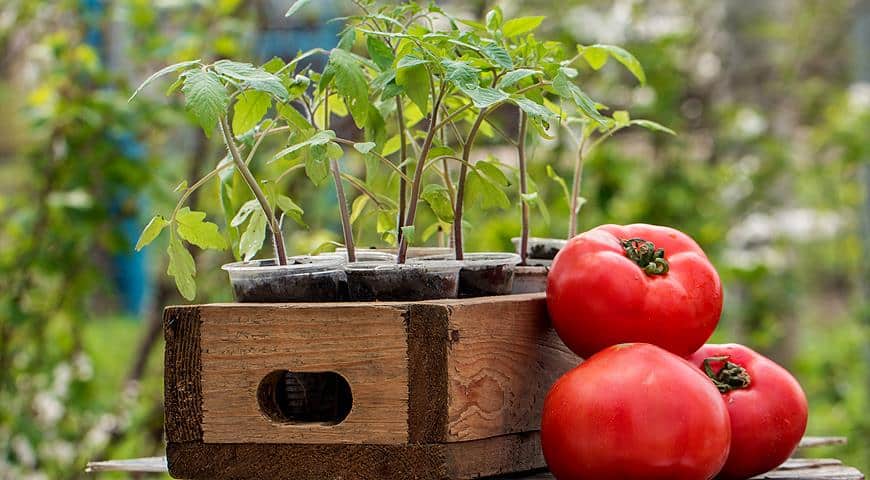

It is very important when growing seedlings to provide it with sufficient illumination for at least 10 hours a day. For this, both conventional luminescent and special phytolamps are used.
The temperature for growing seedlings to the level of 4-5 true leaves should be 20-23 degrees, then the seedlings should be hardened, reducing the daytime temperature to 18-21 degrees, and the nighttime temperature to 15-18 degrees. This mode will save the seedlings from overgrowing.
How to grow step by step
The f1 pink miracle can be grown both in the greenhouse and simply in the garden. According to those who have been growing this miracle in their garden for more than a year, this variety is picky about care, which is very good for those who can come to the site only on weekends. All plant care comes down to timely watering, weeding and feeding.
The only great diligence that will be required from you is to build additional supports for the tomatoes. Although they are not the highest in growth (from 80 cm to 1.5 m), heavy fruits pull the stem down, and the bush will simply break without a garter.
Also, heed the advice of experienced farmers, who recommend forming a bush from the very beginning in order to reduce the stress on the plant. For better yields, this hybrid is best led in two stems, removing unnecessary stepchildren. However, if the soil is well prepared and "filled" with all the necessary microelements, then the plant will cope even with three stems and give an excellent harvest.
However, cultivation starts even earlier: with the purchase of seeds. Someone keeps them in a weak solution of potassium permanganate, someone plants it right like that, and the seeds all germinate perfectly. What to do for you - decide for yourself.
Read also: Strawberry Alba: variety description, photos, reviews
After the seeds have hatched, all further steps are exactly the same as when growing seedlings of other varieties of tomatoes. Namely:
- after the appearance of two or three true leaves, the seedlings dive into separate containers or more spacious containers;
- monitor timely watering and temperature conditions;
- provide additional lighting if needed;
- once every two to three weeks, seedlings are fed with fertilizers.
After about 60 days, if weather conditions already allow, the seedlings are transported to the site, where they are planted in a permanent place of growth and fruiting: in a greenhouse or open ground.
If you have a small number of bushes (maximum 10-15 pcs), ordinary 5 liter water bottles or 3 liter glass jars can serve as a covering material. They cover young seedlings at night, creating a greenhouse effect. You can leave this shelter for the whole day, if the weather does not please with the warmth of the sun.
Residents of the southern regions can skip the seedling period and plant seeds directly in open ground, focusing on the planting calendar. Fruits in this case will have to wait longer, but avoid the hassle of growing seedlings.
Landing in the ground
Seedlings are planted at the age of 2 months. This is the beginning of June for open ground and the end of April - beginning of May for greenhouses.
To create a more powerful root system, seedlings are planted obliquely, deepening the stem to the first leaves.
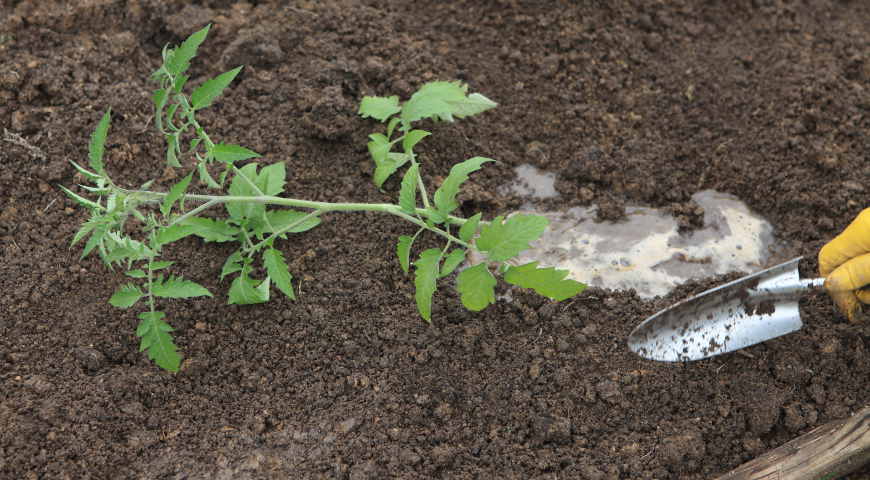

Planting pits are located at a distance of 70 cm from each other. Before planting, they are filled with full complex fertilizer and a handful of wood ash and watered abundantly. Top covered with fertile soil and mulched with cut grass.
Important! It is not recommended to use black film as mulch due to the possibility of root decay.
When planting, a support for the future bush is immediately installed.
Harvesting and storage
The Rose Miracle variety is distinguished by its ultra-early ripening. With proper care, you can try the first harvest as early as three months after germination. The fruits ripen together.
If necessary, they can be harvested in an immature state. This will not affect their taste.


Pink tomatoes, with all their advantages, are not stored for long. They are recommended to be consumed immediately after ripening. The fruits do not crack, they tolerate short-term transportation well.
Tomato care
It consists in regular watering, weeding and loosening. Pink tomatoes are very sensitive to sudden changes in humidity: due to their thin skin, the fruits can burst. Therefore, watering should be regular, in small portions strictly under the root of the plant.
Top dressing is carried out 3 times per season:
- before flowering - complete fertilization (NPK);
- before fruit setting - NPK with a predominance of potassium;
- 2 weeks before harvesting the fruits - potassium-phosphorus fertilizers.
Tomatoes are very responsive to foliar fertilization with superphosphate.
Gardeners reviews
Gardeners' reviews indicate that the variety really gives a high yield of delicious tomatoes. If you grow them according to all the rules of agricultural technology, the result will surely please. In the greenhouse, the bushes begin to bear fruit earlier, in the open field later.
Plants practically do not get sick, they bear fruit equally well under cover and in the open field. Sweet and fragrant fruits have an excellent presentation. They are used for making sauces, juices, dressings, but they are most delicious fresh.
Those who planted this variety are happy to continue to grow it in the future. However, seeds grown on their own plot are not suitable for planting next season. The plants obtained from them either do not repeat the original qualities, or do not bear fruit at all.
Disease and pest control
The hybrids are resistant to diseases of the nightshade, this feature was inherited by the Pink Miracle tomato. It resists well such diseases as Alternaria, Fusarium, tobacco mosaic. Due to the early ripening period, the Pink Miracle does not have time to "catch" phytophthora.
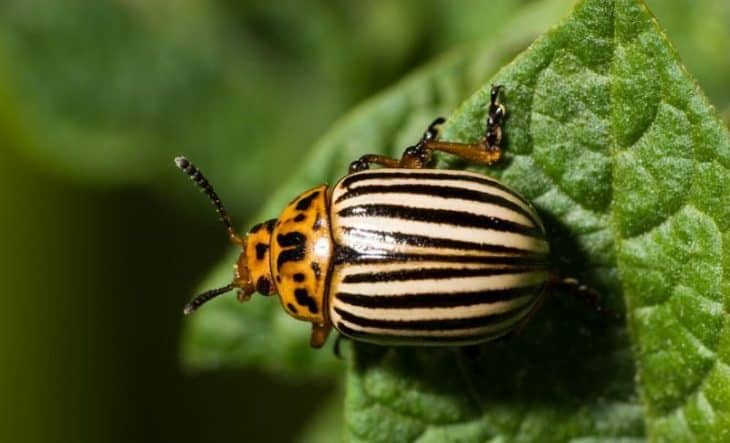

The variety is less resistant to pests: Colorado potato beetle, aphids, whitefly.It is very important to notice pests in time and carry out appropriate insecticide treatment.
Possible diseases
Despite the fact that this type of tomato is resistant to various kinds of diseases, insects can attack it with poor care. To get rid of them, odorous substances should be laid between the beds, for example, cinnamon, onion husks, black pepper. In case of tick lesions, they can simply be washed off with soapy water.
It is worth considering that in the process of growing tomatoes Pink Miracle, the summer resident will not have to deal with many common pathologies. This is due to the plant's high resistance to tobacco mosaic virus, late blight, Alternaria.
However, when planting a plant in the soil, it is necessary to take timely care of the seedlings, otherwise their immunity may weaken and be exposed to pests.
Hybrid varieties are resistant, excellent taste and aroma. Therefore, Pink Miracle tomatoes are often planted by gardeners in their summer cottages. Since this variety gives a rich harvest, summer residents can harvest a huge variety of salads, sauces, and soups for the winter. Reviews claim that if there is no desire to engage in canning vegetables, the Rose Miracle can be quickly sold on the market, since this variety is in great demand among buyers.
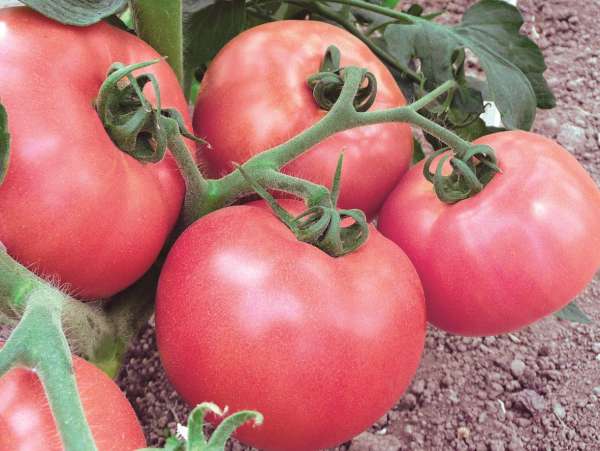

So that you can know more about vegetables that you could plant on your site, we write detailed articles. And today one of the leaders among tomatoes is the tomato "Pink Miracle f1", about which the reviews are great. You can already see the photo. It is the varieties of this color that are in great demand and popularity. They are often sweeter, larger than their red counterparts.
Advantages and disadvantages of the variety
Pink tomatoes are always in demand among vegetable lovers for their delicate taste and pleasant aroma. And early pink tomatoes, ripening at a time when there are still very few fresh vegetables, are especially desirable.
The advantages of the pink miracle tomato include:
- Early ripening.
- Excellent taste.
- Amicable ripening of fruits.
- Disease resistance.
- Good yield.
Cons of the variety:
- Low keeping quality and transportability.
- Cracking of tomatoes in case of violations of the irrigation regime.
- Unsuitability for conservation.
- The need for pinching and forming a bush.
- Impossibility to reproduce through your own seeds.
Fruit application
Ripening of vegetables begins in June, the fruits ripen together, which makes them easier to pick.
Tomatoes can be picked immature, they are quite capable of picking up color on their own, without losing their taste.
A variety of tomato refers to salad, therefore, first of all, they are used fresh. Tomatoes are great in all salads, and they complement other vegetables perfectly. Hot and vegetable dishes are prepared from them, used in baking with meat.
This type is not suitable for pickles and pickles, but it can be used to make tomato products, for example, juice or pasta. True, the color of tomato juice will be paler. For a rich color, pink tomatoes are mixed with red ones.
Ripe vegetables cannot be stored for a long time. They are either eaten right away or canned salads are made.
The difference between these tomatoes is the high yield of the marketable mass. Vegetables are transported over short distances with the possibility of quick sale.
Tomatoes are not suitable for whole-fruit canning due to their large size. Tomatoes are eaten fresh, used for making salads.
Reviews of those who planted the pink miracle tomato
Alevtina, Nizhny Novgorod:
I love pink tomatoes, so when I saw the seeds of the Pink Miracle F1, I immediately took it. I planted 2 seedlings in a greenhouse, 2 in open ground. Grown in a greenhouse - a little more than a meter, in the exhaust gas - 80 cm.Very tasty for a hybrid! The variety is really ultra-early, the first tomatoes were already in June. It's bad that everyone ripens at once. And then it's empty. But I will plant it exactly next year. Didn't hurt anything.
Ekaterina Pavlovna, Izhevsk:
I never thought that hybrids could be delicious. They are usually wooden and tasteless. I planted the Pink Miracle with caution, but it turned out to be an absolutely salad variety, I liked it very much, I will plant it again!
Igor Stanislavovich, Yekaterinburg:
I like everything in the Pink Miracle - the taste, the color, and the fact that they don't get sick. For instant consumption, excellent tomatoes. But! All ripen at once, and very quickly. And they are not stored. We eat and cry: they don’t go to the preparation, throw out the hand doesn’t rise, but it’s impossible to eat right away ... I definitely recommend, but - you need to dilute in time, plant with an interval of 7-10 days.
Description of the fruit "miracle"
Raspberry-pink tomatoes with an average weight of 100 g each, at first glance, they do not represent anything special with themselves. Smooth, neat, smooth, light green in an immature state. During the ripening period, a spot at the stalk is clearly visible. It scares novice vegetable growers a little, it has been present on tomato for a very long time. However, gradual ripening reduces the greens and it disappears completely.
The tomatoes are medium firm to the touch. Pleasant enough to smell, they delight that they are the first to ripen to the table.
Amazing taste is an added bonus. Salad, early production is the most desirable and if it is also pleasant, then such a tomato should be in the gold reserve of every gardener.
The author of the variety, unfortunately, did not bother to conduct a biochemical study of tomato products for the content of dry substances and sugars, however, the "Excellent" rating for tasting qualities indicates that the balance of substances responsible for the sweet-sour aftertaste is fully observed.
Gardeners from different regions note different tastes of tomatoes, and this is not surprising. Having absorbed the warmth of the sun's rays, the tomato fruit synthesized a fair share of sugar, but in more northern regions, the tomato is less sweet, but just as tasty and desirable. The smell of tomato is also interesting, it tends to change. Tomato in the initial stage of ripeness has its own aroma, quite pleasant, but not so intrusive, but when ripe, it thoroughly emits a very interesting, sweet smell.
It may be interesting Pepper "Turquoise": fragrant fruits on your site Features of the popular variety of apricot Lel Before planting the sweet cherry "Julia" - think
Tomato is excellent in processing. Having selected the fruits within 70 - 80 g, they can easily be put into tanks for conservation or pickling. Tomatoes also behave well when quickly fermented in barrels. The fruits do not crack, their flesh remains firm, and the taste is quite satisfying for fans of such products.
Tomato pastes, sauces and juices from the fruits of this tomato have a high dry matter value, which makes them quite full, dense and does not require strong boiling.
Soil requirement for planting
Tomato Pink Miracle can be grown in open beds and greenhouses. For an earlier harvest, tomatoes are recommended to be planted through seedlings. Before planting, you must carefully prepare the site and soil. When grown outdoors, the beds are made in a sunny, draft-free place.
Tomatoes love nutritious and light soil. The best precursors for tomatoes are onions, carrots, cabbage, and courgettes. But where eggplants and potatoes grew, seedlings should not be planted.
You need to start preparing the soil for tomatoes in the fall. During the winter period, the earth will be saturated with all the necessary nutrients. What needs to be added to the soil for a good and healthy plant development:
- Lime - added in autumn and spring to acidic soil. It saturates the earth with calcium and magnesium.
- Bone meal and fungicides are applied 14 days before transplanting.
Farmers reviews
Tatiana, Balakovo: “I grew the Macedonian rose miracle for the first time. At first, the tomato was under cover, and then the film was removed. I didn’t get sick, ripening proceeded in a friendly manner, the fruits were sweet and soft. I liked"
Valentina, Nizhny Novgorod region: “I grew up in a greenhouse. The bush led in 1 trunk, grew short, but fertile. There are 3-4 tomatoes on the branches, the weight has reached 150 g. Very tasty. "
Vera, Krasnodar Territory: “My favorite tomato. Growing fast. The fruits are not large, but fragrant. They go well for sale, and they are among the first to ripen. "

